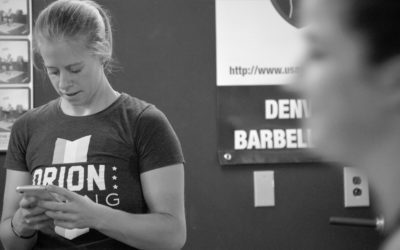The Fundamentals of Program Design for Strength & Conditioning Coaches
TOPIC: Coach Development
Great programming isn’t just sets and reps on a spreadsheet — it’s coaching with intention. You might be training a first-year varsity hopeful or a pro prepping for their next big comp. Either way, your job is to build something that works for them.
The flashiest tools mean nothing without structure, progressions, and real athlete buy-in. This isn’t about chasing trends; it’s about knowing your athlete, setting a clear direction, and making smart decisions that drive real results. Solid program design is the foundation. Get that right, and everything else falls into place.
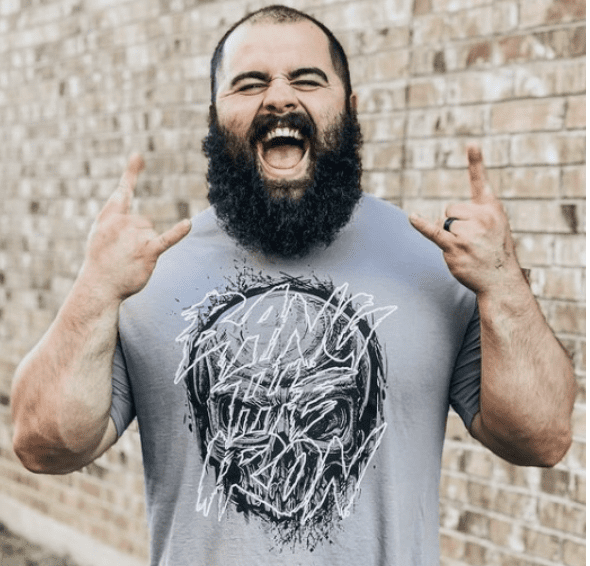
Written By
joseph lucero
Joseph Lucero CSCS, owner of Harvesting Strength, is a powerlifter and strongman coach with years of practical S&C experience in high school, collegiate, and professional settings. His athletes have brought home powerlifting medals, strongman championships, and major bragging rights.
Programs
Insta
Website
Let Your Athlete’s Goals Drive Your Decisions
Hey everyone, my name’s Joseph Lucero. I’ve spent the last 16 years deep in the world of strength and conditioning, working with athletes at every level, from junior high teams to pros, and plenty of private clients in between. These days, my main focus is the private sector. I run my own online coaching business, Harvesting Strength, where I work with all kinds of strength athletes, competitors, and everyday lifters alike.
No matter the setting, one thing has always held true: every athlete needs a program built specifically for them. A volleyball player shouldn’t be training like a cross-country runner, and neither of them should be training like a powerlifter. Makes sense, right?
So, if you’re just starting out in this field or you’re a veteran coach branching into the online space, this article is for you! I’m here to break down the core principles of effective strength and conditioning program design, so you can confidently coach athletes of all types and help them thrive. I’m sure you already have the knowledge, background, and drive to be a successful coach — maybe you just need a more structured, dialed-in approach.
The S&C coaching space is more crowded than ever. But what separates great coaches from the rest isn’t just technical skill — it’s the ability to design smart programs, deliver real results, and build lasting trust with your athletes.
My goal here is to give you the tools to sharpen your edge, grow your coaching practice, and thrive in a field that’s constantly evolving.
How Do I Begin Creating a Strength and Conditioning Program?
Before you can start writing a strength and conditioning program, there are two key things you need to lock in:
- Understand the needs of the athlete
- Set clear, realistic, and measurable goals
Most of the athletes I currently work with come from the powerlifting and strongman communities. That means I’m often helping people chase bigger squats, benches, and deadlifts or prepping them for event-specific work like the log press, yoke walk, and more.
Now sure, both powerlifters and strongman athletes are chasing strength, but how they get there looks different. Their movement demands, energy systems, and recovery needs aren’t the same! And when you compare either of them to more traditional sports athletes like football and basketball players, the gap gets even wider.
That’s why truly understanding who you’re programming for is one of the most important pieces of the puzzle. It’s not just about writing workouts, it’s about designing the right training for the right athlete. That’s what separates a coach who survives versus one who thrives in this crowded industry.
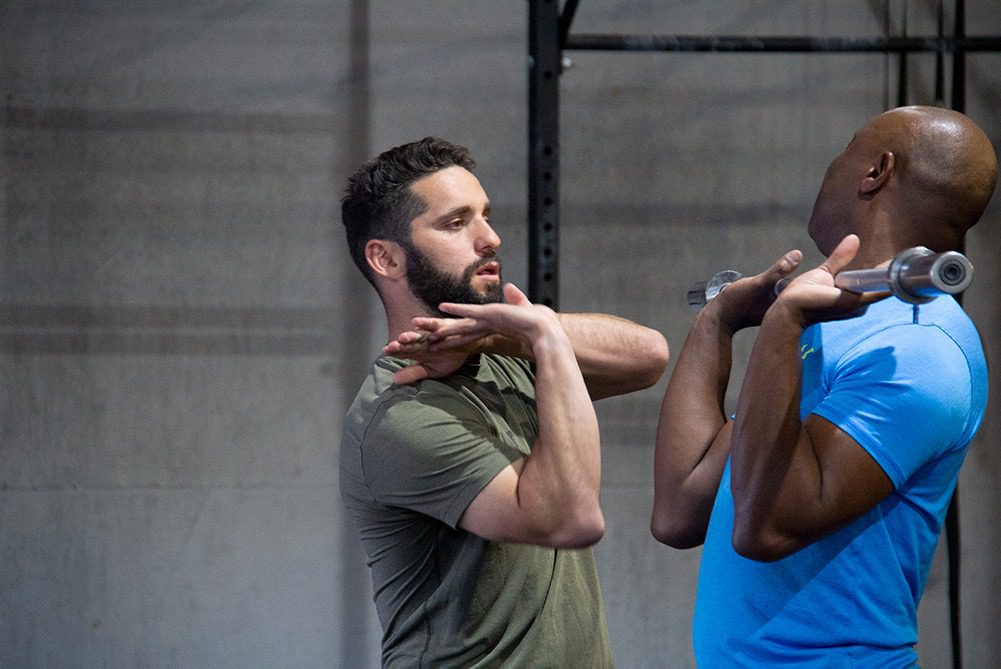
Understanding the Needs of the Athlete
Every strength and conditioning program should begin with a thorough needs analysis of the athlete. This involves assessing their sport, position, competitive level, and individual strengths and weaknesses. A football lineman, for example, will require a different training approach than a long-distance runner. By understanding the physiological and biomechanical demands of an athlete’s sport, you can tailor each program to improves performance while minimizing the risk of injury.
The needs analysis should also take into account injury history, movement deficiencies, and any muscular imbalances that could hinder performance. Conducting tests such as movement screenings, strength assessments, and conditioning evaluations will provide data to create a targeted and effective training plan. Without a comprehensive understanding of an athlete’s needs, even the best-designed program may fail to produce optimal results.
Needs Analysis Report for Prospective Clients
Alright, I’m not the type to keep secrets when it comes to success. I’m here to give you the real stuff. So far, things may have felt a little “surface level,” but now we’re going to dig into practical tools you can use to elevate your coaching and your athletes’ performance.
One thing I always do with prospective clients is ask them to send me videos of their squat, bench, deadlift, and overhead press. Watching those four lifts gives me a clearer picture of their strengths, weaknesses, and any imbalances they might be dealing with. And this isn’t just for powerlifters or strongman competitors, this kind of assessment works for any athlete. I call this their “movement analysis” as it is a piece of the proposal I generate for them to consider working with me.
Once I’ve reviewed the videos, I break things down for them: where they’re solid, where they need to grow, and how I’d structure a program to help them improve. It’s a simple but effective process that builds trust and sets a strong foundation for progress.
Starting with an honest movement assessment gives you a huge advantage. Instead of guessing or tossing an athlete into a generic program, you’re creating something based on what you see, and that can be the difference between success and setbacks.
Setting Clear and Achievable Goals
Goal-setting is the cornerstone of an effective strength and conditioning program. Coaches should work with athletes to set short-term and long-term goals based on their individual needs and sport-specific demands. Goals should follow the SMART framework: Specific, Measurable, Achievable, Relevant, and Timely.
Every client should have a SMART goal, it is non-negotiable. Competitor or not, if you have no goal, you have no drive to the programming and it can’t be built individually for the client’s needs.
For example, an athlete aiming to improve their sprinting speed might have a goal of decreasing their 40-yard dash time by 0.2 seconds over an eight-week training cycle. Strength goals, such as increasing a squat max by 10%, should also be set with clear timelines and structured progressions.
In addition to performance-related goals, coaches should emphasize process goals, daily and weekly habits that contribute to long-term success. These might include consistent sleep patterns, proper nutrition, and adherence to a structured warm-up and mobility routine. When athletes understand both their performance and process goals, they are more likely to stay motivated and committed to their training
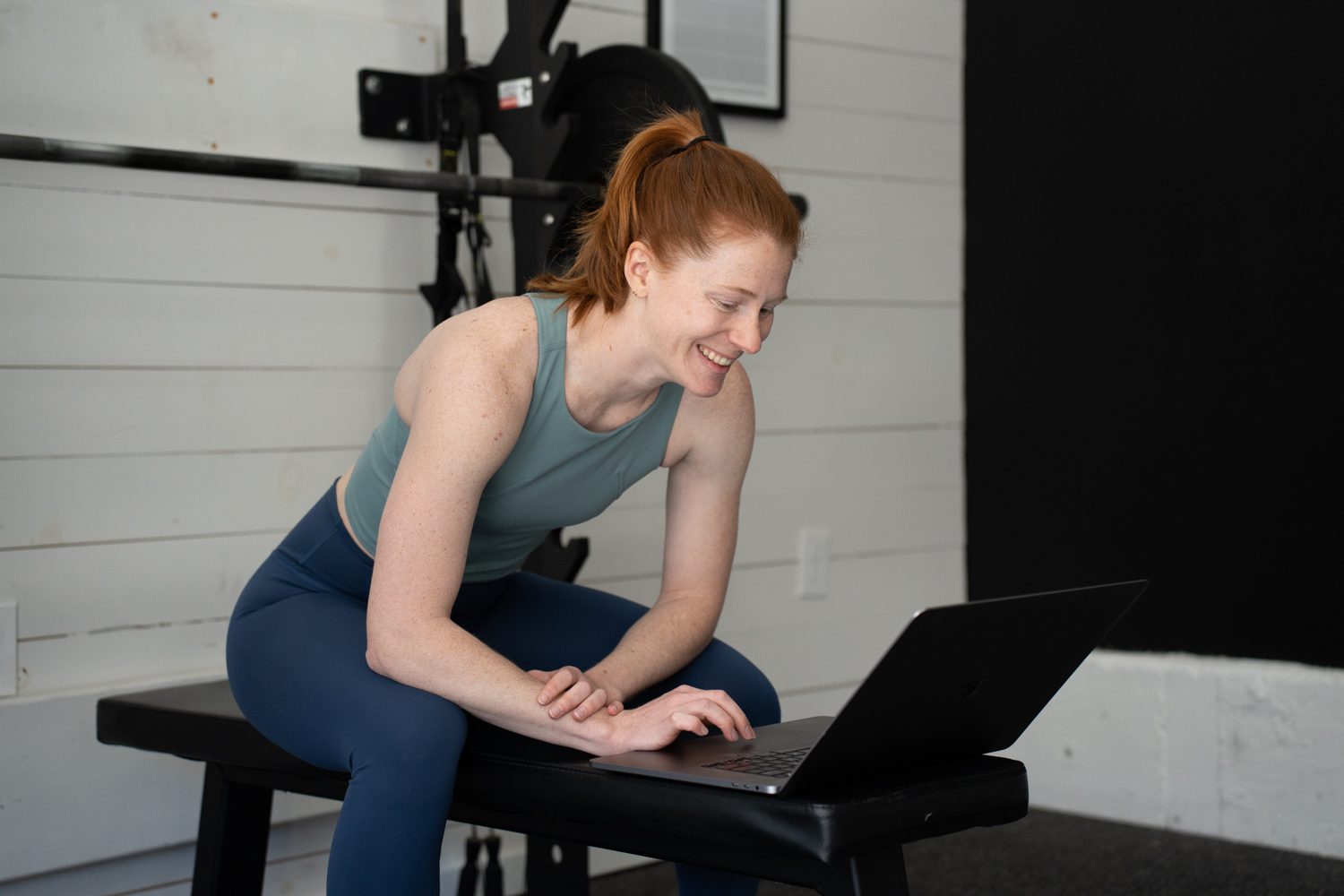
How Do I Successfully Structure the Training Program?
Once you’ve nailed down your client’s goals and needs, it’s time to start structuring the program. I’ve broken this down into the following sections:
- Set up the pace of programming: linear, undulating, or block periodization
- Selecting the right exercises
- Managing training load and recovery
- Recognizing progression versus adaptation
One quote I always come back to is:
“Strength comes in seasons.”
That means your training and your client’s training won’t look the same year-round. Right now, you might be hammering the dumbbell bench press. Next block? Maybe it’s barbell work or pin pressing from the rack. One phase might prioritize aesthetics, and another might demand a full shift into performance mode, trading abs in the mirror for kilos on the bar.
This seasonal shift in focus is what we call periodization, a structured approach to training that helps athletes make consistent progress while avoiding burnout and plateaus. Periodization breaks training into phases, each with a specific goal, and allows you to adjust based on where your athlete is in their sport or training calendar.
There are several types of periodization:
- Linear, where intensity increases while volume decreases. This is traditional with most clients and great for beginner/novice athletes.
- Undulating, where intensity and volume fluctuate week to week. This is more for advanced lifters who have maximized their strength and can push themselves tremendously in workouts. Perhaps one week you max deadlift, then that same week you will do squats for speed.
- Block, which isolates specific qualities like hypertrophy, strength, or power over a few weeks at a time.
For most of my strength athletes, I like to use a block approach across a 16-week cycle:
Weeks 1–4: Hypertrophy – build muscle and work capacity
Weeks 5–8: Strength – focus on moving heavier weights
Weeks 9–12: Power – develop speed and explosiveness
Weeks 13–16: Championship block – test and peak strength levels
What happens after we peak in strength? We reload and build again by starting in a more progressive week one! We will talk more about “progression versus adaptation” in the next few sections.
The weekly training split should also reflect the athlete’s goals and recovery needs. A powerlifter might thrive on a four-day split centered around squat, bench, and deadlift variations. But a team sport athlete? They’ll need more balance. Think strength, speed, agility, and conditioning all working together.
As a coach, it’s your job to find that sweet spot: enough stimulus to drive progress, but not so much that the athlete gets buried under fatigue. Smart program structure is where good coaching becomes great coaching.
Why Choose Between Linear, Undulating, and Block Training?
As a strength and conditioning coach, one of the most important decisions you’ll make is how to structure your athlete’s progression. This is where choosing between linear, undulating, and block periodization comes into play. Each of these approaches has its strengths, and knowing when and why to use them is a game-changer.
Linear Periodization: Linear periodization is the most straightforward; volume starts high, intensity starts low, and over time, those two swap places. It’s great for beginners or athletes who are new to structured training because it allows consistent progression without overwhelming them.
Undulating Periodization: Undulating periodization flips the script by changing volume and intensity more frequently, either daily or weekly. This keeps training fresh and can prevent stagnation, which is especially helpful for more advanced athletes who adapt quickly.
Undulating is best for those who are more intermediate and advanced with their strength, as well as those who are just absolute monsters in the gym! You can’t ask someone to keep squatting 700 pounds on a weekly basis, versus someone who squats 200 pounds.
Block Periodization: Block periodization breaks training into focused chunks. One block might target hypertrophy, the next strength, then power. This style allows you to sharpen specific qualities without trying to do everything at once. It’s my personal favorite for competitive strength athletes.
Block periodization is the most common style I use. I also implement undulating block training with my clients as well, for those more advanced with their strength and are lifting immense totals in competition.
Selecting the Right Exercises
Exercise selection plays a critical role in program design. Coaches must choose exercises that develop the key physical attributes required for an athlete’s sport while ensuring the program remains balanced and addresses potential weaknesses.
Multi-joint, compound exercises like squats, deadlifts, bench presses, and pull-ups should form the foundation of most strength programs. These movements recruit multiple muscle groups, enhance neuromuscular coordination, and build functional strength that translates to athletic performance.
Accessory exercises are equally important for addressing weak points and improving movement efficiency. For example, a basketball player may benefit from single-leg exercises such as Bulgarian split squats to enhance unilateral strength and stability. Incorporating mobility and injury-prevention exercises, such as hip openers and rotator cuff work, ensures the athlete can move efficiently and remain resilient against injury.
Coaches should also integrate sport-specific movements where appropriate. For instance, Olympic lifts like cleans and snatches are excellent for developing explosive power in sports that require rapid acceleration and jumping ability. The key is to select exercises that align with the athlete’s needs while maintaining a balanced approach to strength development.
Exercise Order Matters!
Each training session should start with the big, compound lifts, the ones that require the most focus, technique, and energy. Once those are out of the way, you shift into accessory work to target specific muscles, build volume, and address weak points. Let’s say I asked you to build a session using the following movements:
- Dips
- Inverted Rows
- Push Press
- Hammer Curls
Which one should come first?
Here’s how I’d structure it, and why:
- Push Press – This is your most technically demanding, power-based lift. It takes coordination, timing, and explosiveness, so it needs to be done when you’re fresh.
- Dips – Still a compound push, but less technical. They follow up the push press nicely by further challenging your triceps, shoulders, and chest.
- Inverted Rows – A pulling movement to train the opposite muscles of the push press and dips. Helps maintain muscular balance and supports joint health.
- Hammer Curls – A single-joint accessory to cap off the workout. Perfect for arm development and reinforcing elbow stability after all that pressing.
Think of your sessions like a pyramid: foundation first (big lifts), then build upward (accessories). That approach keeps performance high, prevents injury, and gets your athletes stronger over time.
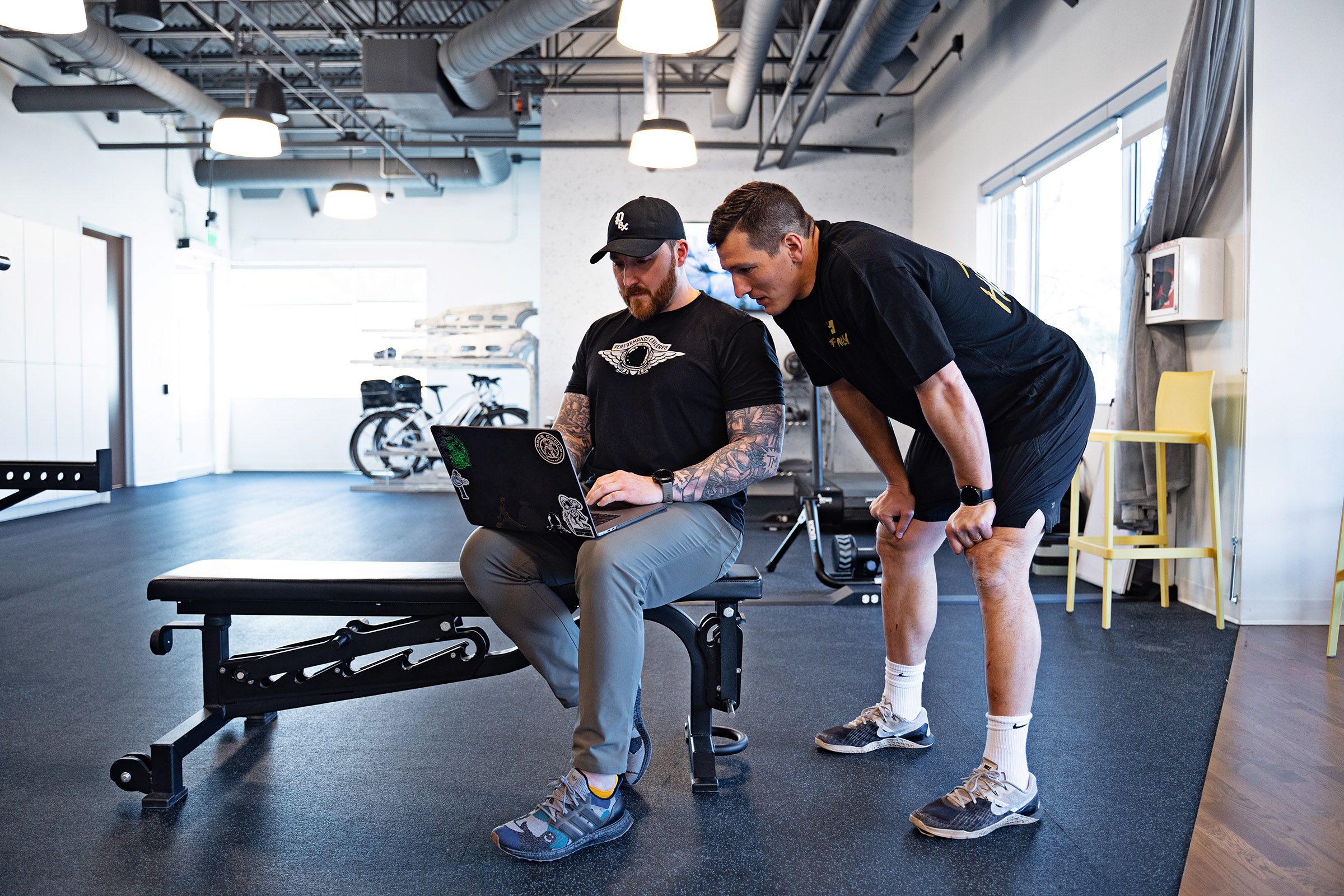
Managing Training Load and Recovery
One of the most overlooked aspects of program design is managing training load and recovery. Strength and conditioning programs must balance stress and recovery to allow for optimal adaptation and performance gains.
Training load is typically measured using volume (sets x reps x load) and intensity (percentage of 1-rep max). Coaches should progressively overload their athletes, ensuring a gradual increase in intensity and volume without pushing them into overtraining. Monitoring tools such as rate of perceived exertion (RPE), heart rate variability, and readiness assessments can help coaches gauge an athlete’s fatigue levels and adjust training accordingly.
Recovery strategies should also be an integral part of any program. Sleep, nutrition, hydration, and soft tissue work (such as foam rolling and massage) all contribute to an athlete’s ability to recover between sessions. Active recovery days, deload weeks, and periodized rest cycles can further enhance long-term progress and reduce injury risk. A well-designed program should not only push athletes to their limits but also ensure they have the necessary recovery time to adapt and grow stronger.
Use Deload Weeks to Keep Progress Steady
Every 3–4 weeks, program a deload week for your clients. This is a strategic reduction in volume and intensity to help the body recover, prevent burnout, and keep progress moving forward.
Here’s a simple rule of thumb:
Reduce both volume and intensity to about 80% of the previous week’s workload.
Let’s break it down with an example. If your athlete did:
Deadlifts – 3 sets of 6 reps at 315 lbs (18 total reps)
During the deload, aim for:
- 80% of the intensity → 315 x 0.80 = ~250 lbs
- 80% of the volume → 18 x 0.80 = ~14 reps
You could structure that as 3×4 or 3×5 at 250 lbs. It’s close enough to 14 reps and still gets the job done.
Deloads aren’t about going easy, they’re about training smart. Give your athlete’s body a break before it breaks down.
Progression Versus Adaptation
A successful training program is one that continuously challenges the athlete while allowing for adequate adaptation. Coaches must implement progressive overload, gradually increasing resistance, volume, or intensity, to ensure continued improvement.
However, progression is not always linear. Athletes will experience fluctuations in performance due to factors such as stress, sleep, and competition schedules. Coaches should be prepared to make adjustments based on real-time feedback and performance trends. For instance, if an athlete is struggling with fatigue, reducing training volume for a week or incorporating more recovery work may be necessary.
Adaptation also involves periodizing training phases to prevent stagnation. A strength athlete may cycle through hypertrophy, strength, and peaking phases, while a team sport athlete may have phases focused on off-season strength development, pre-season power, and in-season maintenance. Coaches must continuously evaluate and refine their programs to ensure they align with the athlete’s long-term development.
The Role of Communication for a Successful Program
Even the best-designed program will be ineffective if the athlete does not fully commit to it. Communication and athlete buy-in are crucial for program adherence and long-term success.
Coaches should take the time to educate their athletes on the purpose behind their training programs. When athletes understand why they are performing certain exercises and how those movements translate to performance gains, they are more likely to engage fully in the process. Providing regular feedback, tracking progress, and celebrating milestones can also help keep athletes motivated.
Building strong relationships with your athletes fosters trust and improves compliance. Coaches should listen to their athletes, address their concerns, and be willing to adapt programs when necessary. By creating an environment of collaboration and accountability, coaches can ensure that their athletes remain committed to their training and continue to make real progress.
Final Thoughts
At the end of the day, writing a strength and conditioning program isn’t just about putting sets and reps on paper. It’s about building something with purpose. Whether you’re working with a raw beginner, a top-level strongman, or a high school athlete looking to get their first varsity start, the mission stays the same:
Create a program that actually works for them!
You don’t need to be flashy. You don’t need 50 different variations of curls or some wild contraption from social media. What you do need is a structured approach, real communication with your athlete, and the willingness to adapt when life throws a curveball.
Take your time to understand who’s in front of you, define clear goals, choose smart progressions, and always leave room to pivot. Keep learning, keep sharpening your craft, and most importantly, coach like someone’s future depends on it.
Find Your Perfect Training Plan
Sometimes all you need to reach your destination on your fitness journey is an expert guide. Look no further, we've got you covered. Browse from thousands of programs for any goal and every type of athlete.
Try any programming subscription FREE for 7 days!
Related Articles
You May Also Like...
5 Powerful Tips for Fitness Coaches Who Want to Stand Out
If you’re in the trenches as a coach or trainer, you already know this industry doesn’t hand out gold stars for effort. The fitness space is saturated, competitive, and often filled with more flash than substance. If you're just starting out or years deep, what...
5 Common Coaching Mistakes and How to Avoid Them
Coaching is more than writing workouts — it’s about connection, clarity, and long-term impact. But even the most dedicated coaches make simple mistakes that can stall an athlete’s progress. Here’s how to spot (and fix) the ones you might not even know you’re...
Effective Ways to Coach At-Home Athletes
Transitioning to remote coaching presents unique challenges for strength and conditioning coaches, especially when athletes lack access to standard gym equipment. Effective communication and creative programming are essential to maintain engagement and ensure athletes...
5 Powerful Tips for Fitness Coaches Who Want to Stand Out
If you’re in the trenches as a coach or trainer, you already know this industry doesn’t hand out gold stars for effort. The fitness space is saturated, competitive, and often filled with more flash than substance. If you're just starting out or years deep, what...
5 Common Coaching Mistakes and How to Avoid Them
Coaching is more than writing workouts — it’s about connection, clarity, and long-term impact. But even the most dedicated coaches make simple mistakes that can stall an athlete’s progress. Here’s how to spot (and fix) the ones you might not even know you’re...

Want more training content?
Subscribe
For Coaches
For Athletes
About
Support
Training Lab
Access the latest articles, reviews, and case studies from the top strength and conditioning minds in the TH Training Lab!
Made with love, sweat, protein isolate and hard work in Denver, CO
© 2024 TrainHeroic, Inc. All rights reserved.


